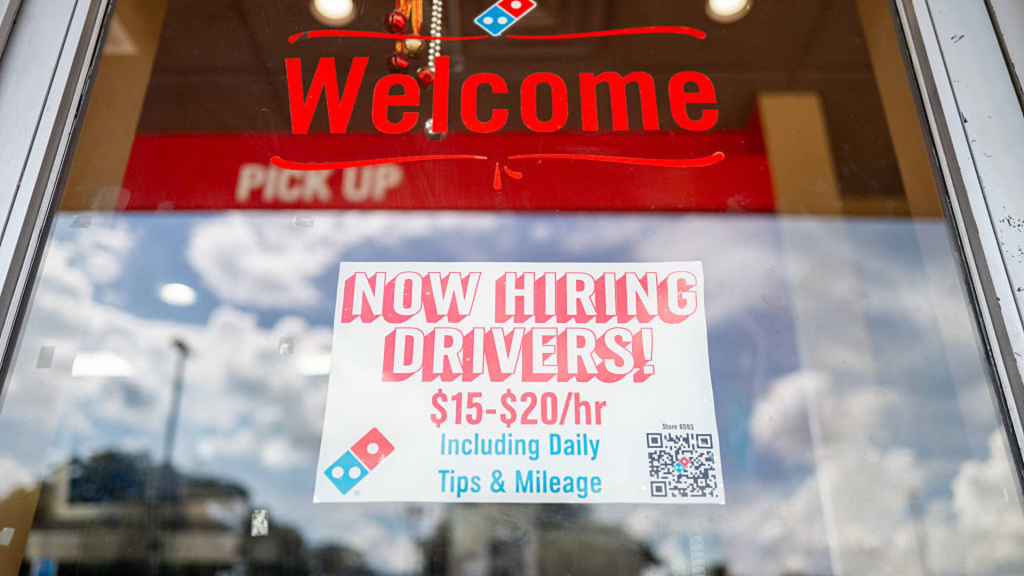Federal government employees facing layoffs from this year are experiencing a downturn in the job market at a particularly challenging time.
A notable decrease in hiring and job openings has coincided with a wave of job seekers, as the Department of Government Efficiency, under Elon Musk’s oversight, has recommended significant layoffs affecting hundreds of thousands of federal workers.
While many economists have downplayed the situation, a turbulent signal emerged recently; payroll processor ADP reported an unexpected decline in private sector employment, revealing a loss of 33,000 jobs in June, a stark contrast to the projected increase of 100,000 jobs.
Despite the minimal immediate impact of the Department of Government Efficiency layoffs on overall job growth, recent data from the Indeed Hiring Lab suggests that this trend could soon shift significantly.
Diminished Demand for White-Collar Jobs
“There are still many uncertainties regarding how this situation will unfold in the labor market. A significant number of former federal employees are actively seeking new positions,” noted Cory Stahle, a senior economist with Indeed. “The primary concern is whether they will find opportunities in light of the declining demand for white-collar positions, especially those requiring higher education.”
From January to April of this year, job openings decreased by 5%, and the hiring rate has reflected levels not seen since 2014, according to data provided by the Bureau of Labor Statistics.
Concurrently, Indeed has experienced a staggering 150% increase in applications from federal agency workers, particularly for knowledge-oriented roles in data analytics, marketing, and software development. Although there was a slight reprieve in May, with a 4% drop in applications, the broader implications of the Department of Government Efficiency layoffs are becoming increasingly evident.
“The demand from employers has diminished markedly for white-collar positions compared to various skilled labor roles,” Stahle explained. “This poses a significant challenge for those entering the job market today.”
Declining Payroll Growth
The impact of the Department of Government Efficiency is a crucial factor as policymakers investigate any signs of weakness in what had been a sustained labor market recovery since the Covid pandemic.
Economists anticipate a snapshot of the current job market when the Bureau of Labor Statistics releases its June nonfarm payrolls report. According to a survey conducted by Dow Jones, a modest growth of 115,000 jobs is expected, which, if realized, would mean that every month in the first half of the year saw fewer than 150,000 new jobs added—a rate reminiscent of conditions in the wake of the financial crisis, excluding the pandemic year of 2020.
Analysts predict that the unemployment rate may rise to 4.3%.
This year’s initiatives by the Department of Government Efficiency have led to over 280,000 job cuts, as recorded by Challenger, Gray & Christmas.
While the precise influence on overall job statistics remains uncertain—partially because many affected workers have secured new roles and some initial layoffs have been reversed—there are no significant changes in job openings at the federal level this year. However, that stability does not guarantee that these positions will be filled.
Stahle pointed out that beyond the federal workforce reductions, several other barriers complicate the job search for individuals.
He highlighted that securing technology-related positions has become increasingly competitive as the Federal Reserve’s ongoing high interest rates discourage tech companies reliant on debt from expanding their operations. This tightening of monetary policy has come despite persistent requests from President Donald Trump for a relaxation of such measures.
“Many startups and tech firms depend on loans for growth and employment, and ascending borrowing costs can naturally limit their capacity to hire,” noted Stahle. “Following the pandemic, these companies expanded rapidly, bringing in substantial talent, and now they may not require additional personnel.”


























